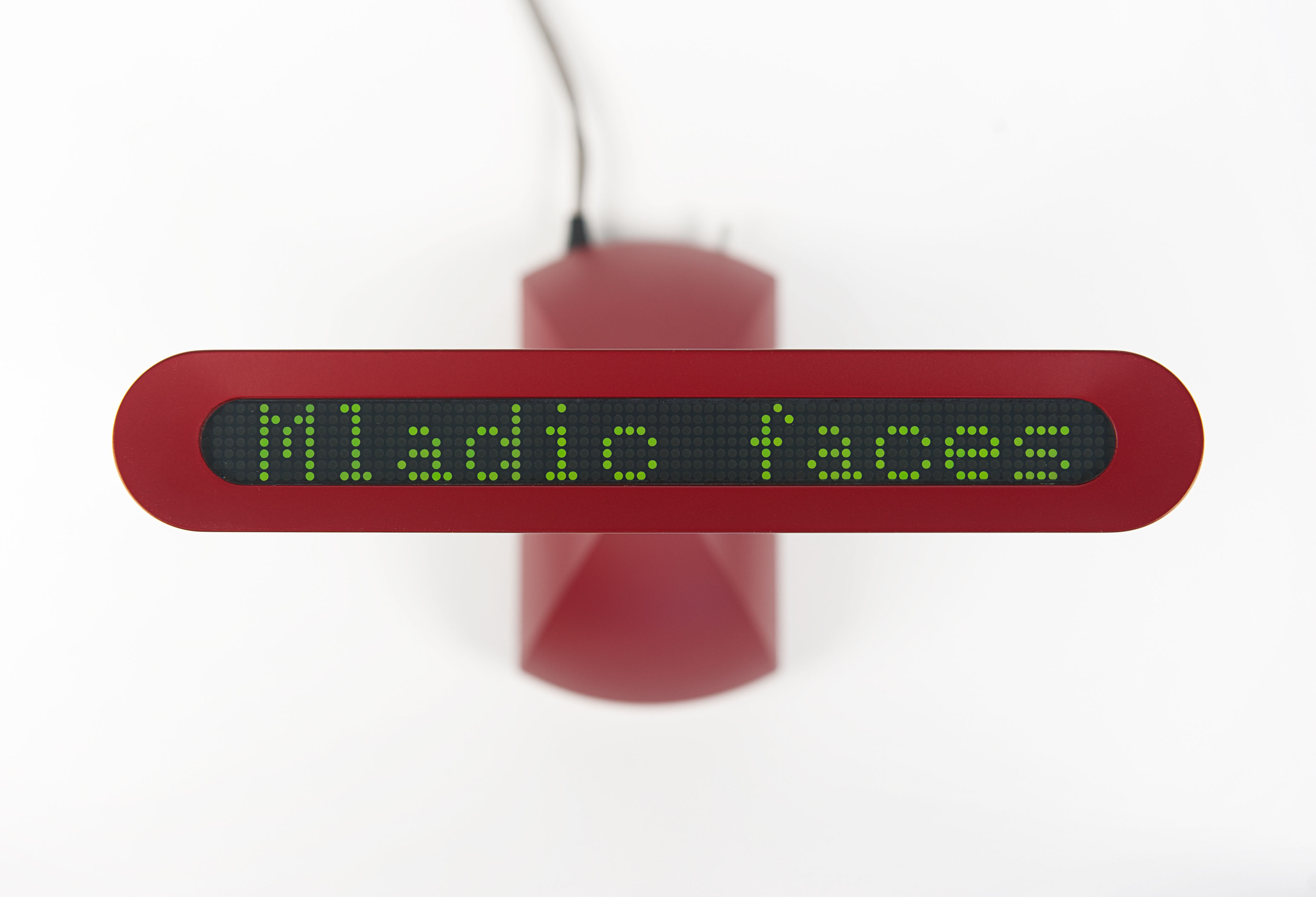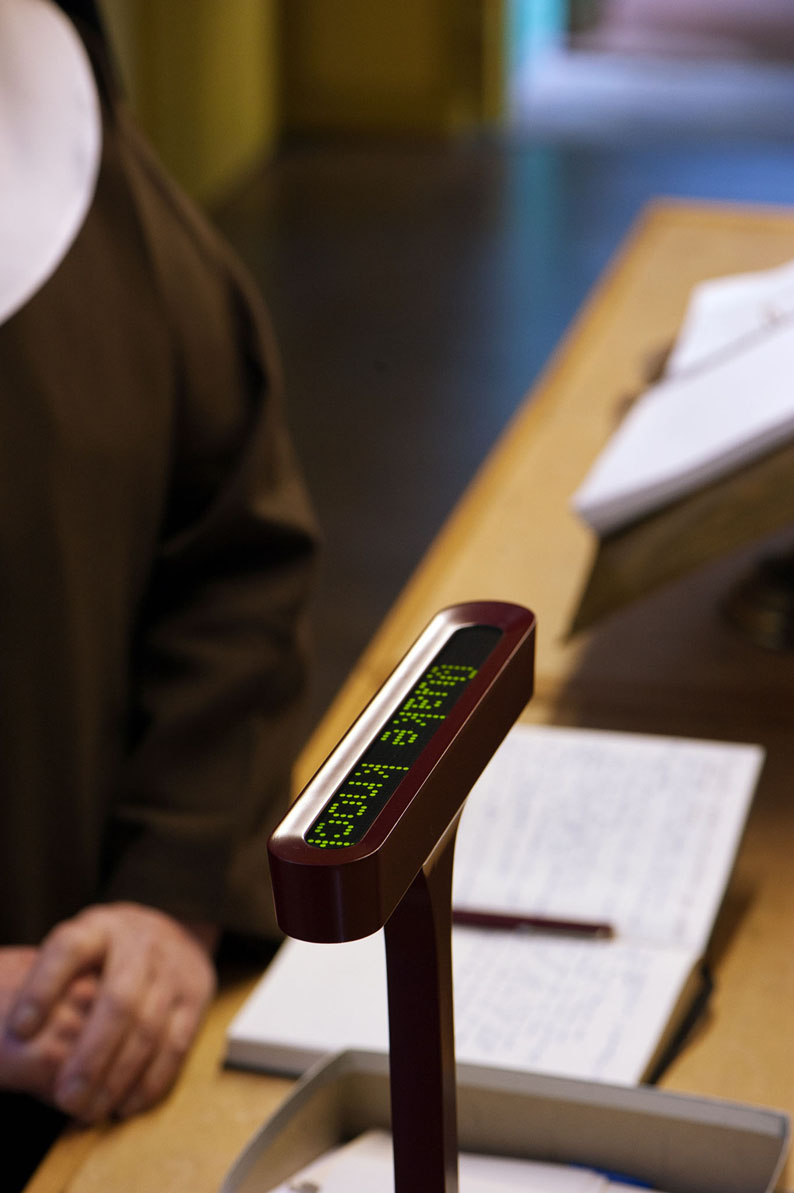We talk to Goldsmith's Interaction Research Studio about working with nuns for the 'Prayer Companion,' and we peer into the data future with their predictions for society.

The Interaction Research Studio, based at Goldsmiths College, designs interactive devices as a way of exploring new possibilities for technologies — and for people. It’s a form of research in which they lend the things that they create to people to try out in their everyday lives. They produce work which aims to ‘engage the technology sector with more complicated, less consumer-oriented ways to be human.’
At Big Bang Data you are presenting the Prayer Companion, can you explain the concept behind the work?
The nuns we worked with live in a cloistered monastery, yet pray on behalf of the people around them. The channels of information into their enclosure were narrow — catholic newspapers, personal appeals, and carefully chosen radio broadcasts. We wanted to open them to information from around the world, to ensure their prayers weren’t biased towards any particular perspective on events.
How did data inform your design?
The Prayer Companion streams data scraped from the web into the nun’s enclosure. Its content reflects the ever-changing flow of conversation in social media and news sites, reframing it as a never-ending, implicit appeal for God’s intervention.
How and why did you choose We Feel Fine as a aggregated news data source for the Prayer Companion’s messages?
We wanted to include potentially prayer-worthy content from social media, but our web scraping skills were limited at the time. We were big fans of We Feel Fine, which already looks for ways people write about their experiences, and realised that using their data would make our jobs much easier.
Why did you select to work with the nuns, and a monastery in York? How did they respond to the idea / have they given any feedback?
We were working on a project that was concerned with building new technologies for older people. It turned out that our project partner happened to live next to the nun’s monastery and knew that they were an ageing population. So we approached them and asked if they would like to be involved in our project, and to our surprise they agreed.
We developed the Prayer Companion over the course of a year through discussions with them about how they received information about world events. The device affected their prayers from the very beginning of its installation in the monastery, and they went on to to use it for five years, until they moved to a new site last year. They told us that many of them would look at messages several times a day, and that the Prayer Companion helped keep their prayers ‘pertinent’.
What are the benefits, and pitfalls, of using data to inform design?
We tend to use data as a material for design, not to inform our designs. The advantage of reframing online data is that content becomes virtually inexhaustible. The danger is that, because we are not in charge of collecting it, the data we use can potentially carry other people’s agendas along with our own.
Is there a project by a studio/designer which you think is leading the way in terms of data-informed design?
Mark Hanson and Ben Rubin’s work on projects such as the Listening Post — on permanent display at the Science Museum — was extremely inspiring for our work.
How do you think society’s use of data will change over the next ten or twenty years?
It seems clear that not only will more and more data be collected from all of us, but they will be mined for ever more unexpected patterns. There are lots of reasons to be concerned about this, of course. It’s not just that we’re trading privacy for convenience, but we’re increasingly buying into a logic of ‘populationisation’, in which we understand ourselves as individuals solely in terms of how we compare to other people. Moreover, as Mark Andrejevic points out in his paper ‘The Big Data Divide’, most of us are unable to even begin to guess about the sorts of patterns that data mining uncover. Unless you happen to have the enormous processing power and server farms it takes to do the work, the sorts of correlations being uncovered are simply unthinkable.
On the one hand, then, the massive amount of data and content being collected will be like a gigantic playground, or perhaps a cornucopia of knowledge and ideas and events and content that we will be able to gorge on to our heart’s content. On the other hand, it is inevitable that within the next 20 years we will be the helpless, convenience-enchained slaves of artificially intelligent, data-harvesting corporations and governments who know what we will do before we even think of it.

